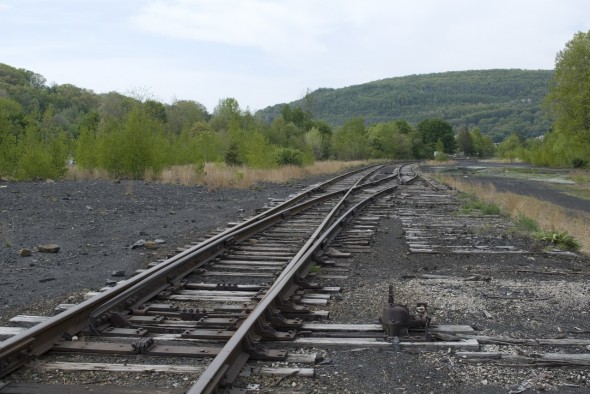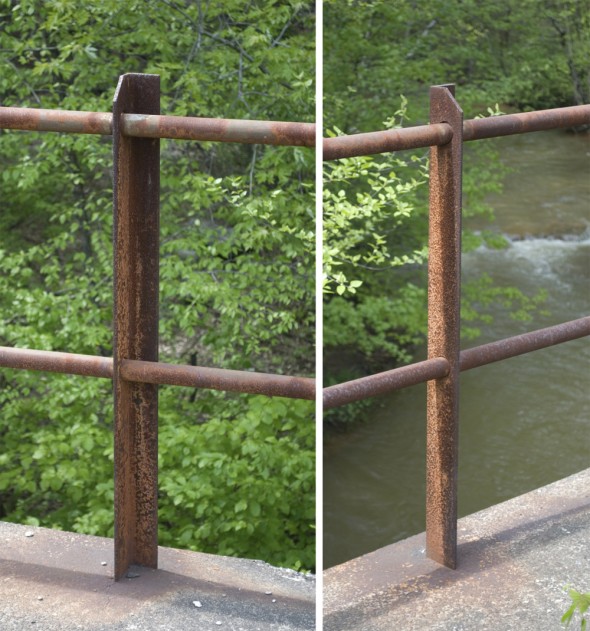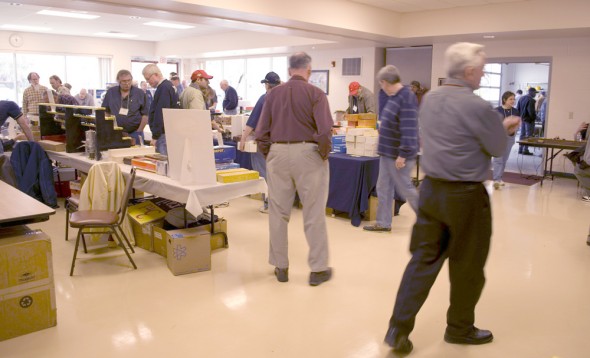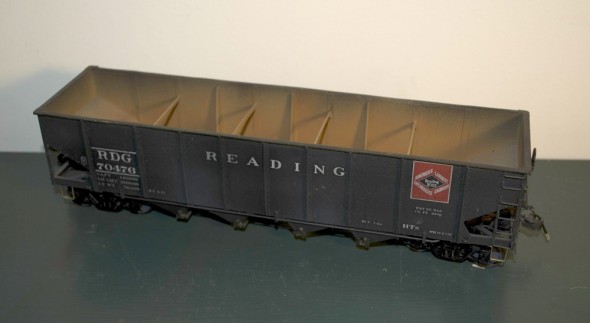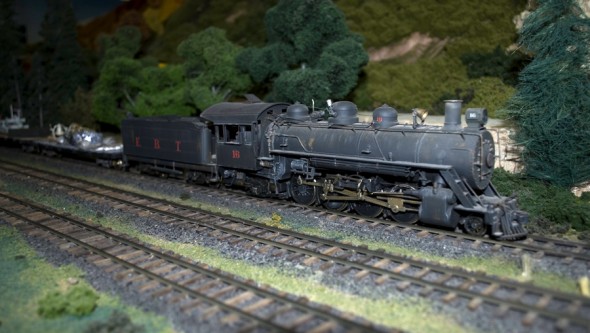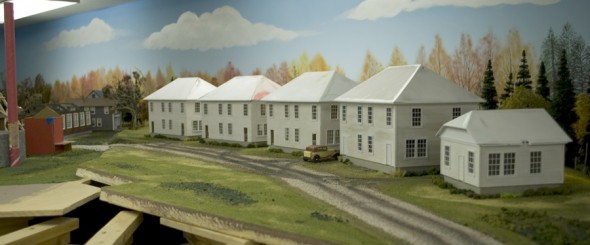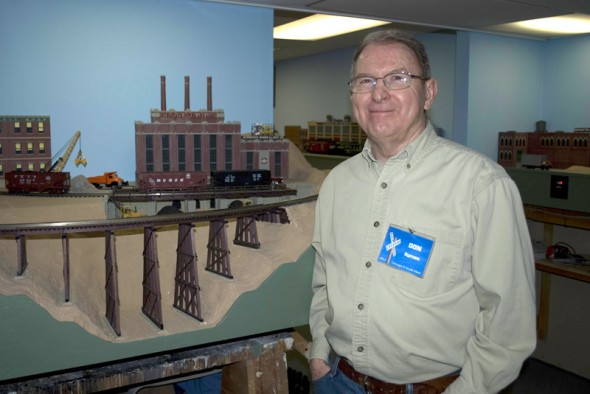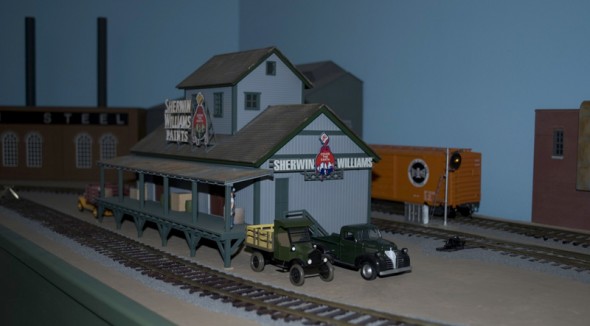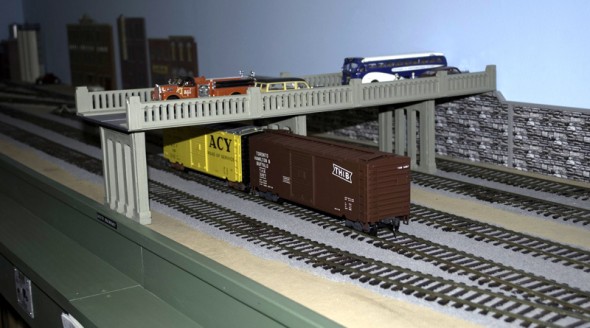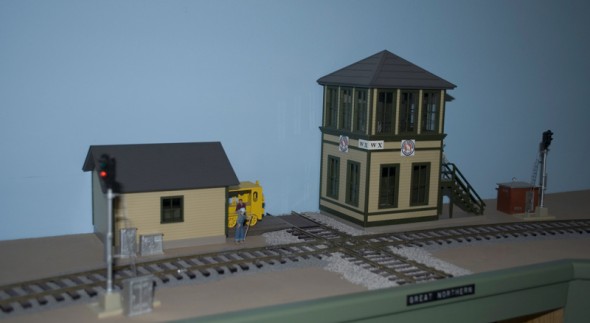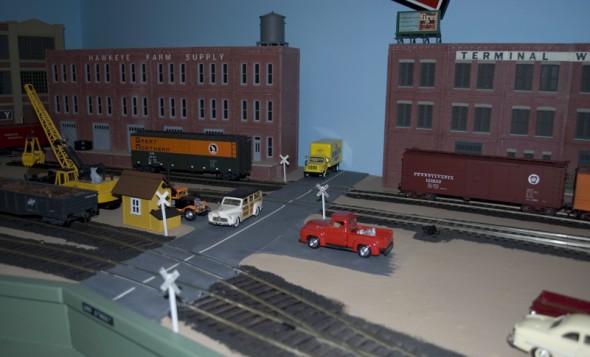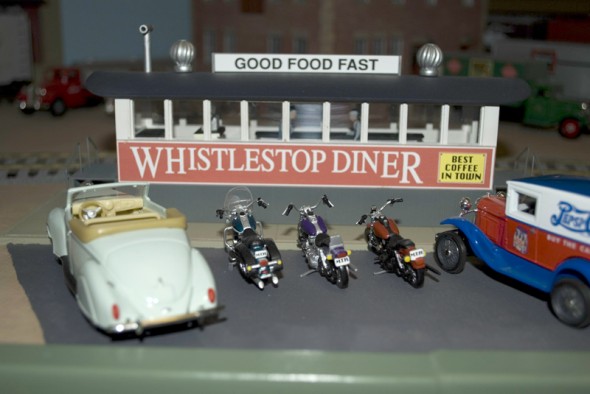Back in the Wheel Standards post, I started to take a look at how wide some of the currently produced O scale wheels are. What followed was the page NMRA S-4.2 O Scale Wheels Standards where I started to document how far from standard our wheels are. What I found was very disappointing, almost none of the products that were available were within the NMRA standard for wheels.
That opens a big question mark for me. I believe in standards, they are what will make the railroad run smoothly. What I was seeing was nothing close to standard.
On the ride back from Chicago I was able to have a long conversation with Matt Forsyth who was really stuck in the Jeep listening to me. He had been prodding me for a couple of months to thin down my standards, go to .135 wheel widths only to find out that the NMRA already went to .145. Here is an example of one of Matt’s Intermountain trucks with the thinned down .135 wheelsets.
 Well as the conversation turned, I asked “you’re only .020 off of P48 widths, why not go back to p48 standards?” That lead to a long conversation about what’s important to each of us as modelers and what wasn’t. At the end of the conversation we were looking at trying proto48 standards with a 5 foot gauge. We each had our reasons for not just saying yes to Proto48 again.
Well as the conversation turned, I asked “you’re only .020 off of P48 widths, why not go back to p48 standards?” That lead to a long conversation about what’s important to each of us as modelers and what wasn’t. At the end of the conversation we were looking at trying proto48 standards with a 5 foot gauge. We each had our reasons for not just saying yes to Proto48 again.
We ordered in some wheelsets from Protocraft, boy did they look great! Matt quickly modified a set of wheelsets with a spacer installed behind the wheels to adjust the guage. The concept could work nicely. But is this the right direction? I stayed back on the fence a little, still not sure I wanted to commit to the concept. All the while those wheelsets kept sitting on the workbench screaming at me.
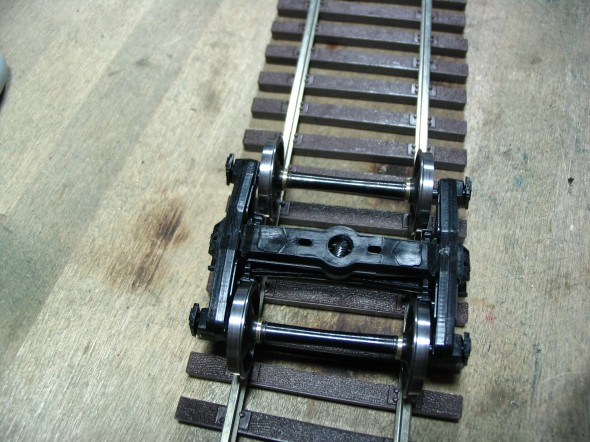
The data about the lack of standards for O scale kept piling up this Spring, some manufacturers had different tolerances on different runs of the same products.
When I made the choice to stop modeling in Proto48 back around 2000, I was headed in a different direction. I was a member of a club that really did not want proto48 in it, I had an ever increasing Steam Locomotive stable and didn’t have any real machining skills and there were not many products available for Proto48.
What I now realize, if you want standards, everything is a project to convert no matter what the gauge. If I used the new NMRA standard almost everything needs to be converted, if I go to proto48 standards, everything needs to be converted. On some projects in the queue to be built, it is actually more work to use the NMRA Standards than the p48 standards, mostly because of the products produced by Protocraft.
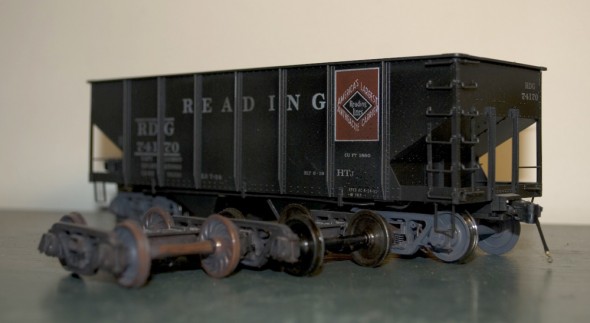
In this photo is a San Juan P48 USRA Andrews truck with San Juan plastic wheelsets, a San Juan truck with Protocraft wheelsets, and on the car another San Juan truck with PSC wheelsets. There is a difference. Here is a close up of the San Juan USRA Andrews truck with a Protocraft wheelset on the left and a PSC wheelset on the right.







